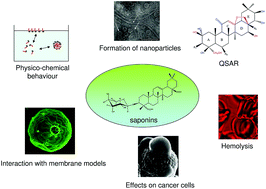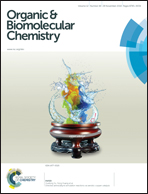The amphiphilic nature of saponins and their effects on artificial and biological membranes and potential consequences for red blood and cancer cells
Abstract
Saponins, amphiphiles of natural origin with numerous biological activities, are widely used in the cosmetic and pharmaceutical industry. Some saponins exhibit relatively selective cytotoxic effects on cancer cells but the tendency of saponins to induce hemolysis limits their anticancer potential. This review focused on the effects of saponin activity on membranes and consequent implications for red blood and cancer cells. This activity seems to be strongly related to the amphiphilic character of saponins that gives them the ability to self-aggregate and interact with membrane components such as cholesterol and phospholipids. Membrane interactions of saponins with artificial membrane models, red blood and cancer cells are reviewed with respect to their molecular structures. The review considered the mechanisms of these membrane interactions and their consequences including the modulation of membrane dynamics, interaction with membrane rafts, and membrane lysis. We summarized current knowledge concerning the mechanisms involved in the interactions of saponins with membrane lipids and examined the structure activity relationship of saponins regarding hemolysis and cancer cell death. A critical analysis of these findings speculates on their potential to further develop new anticancer compounds.

- This article is part of the themed collection: Recognition and Reactivity at Interfaces

 Please wait while we load your content...
Please wait while we load your content...